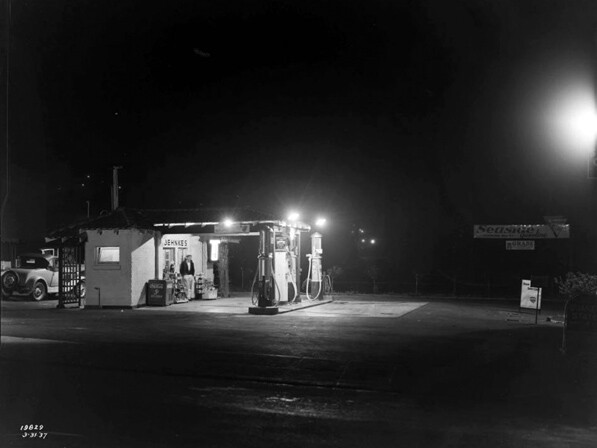Seeing the Dark: More Photographs from the Edison Collection
A continuation of last week's story...
Along with almost two dozen other guest curators, I was asked by exhibition organizers Bill Deverell (USC) and Greg Hise (UNLV) to sift through the massive collection of Southern California Edison photographs archived by the Huntington Library (in the care of Jennifer Watts, the Huntington's Curator of Photographs).
The sifting was part of the Getty's retrospective on the making of Los Angeles called Pacific Standard Time Presents: Modern Architecture in LA, a continuation of last year's series of exhibitions on art and design in mid-century Southern California.
(The Getty's contribution to PST Presents is called Overdrive. That exhibition opened on April 8.)
Deverell and Hise's collaboration, in conjunction with the Huntington, uses architectural photography in an elastic way to probe at how and why we interpret mid-century Los Angeles through its images. Form and Landscape: Southern California Edison and the Los Angeles Basin, 1940-1990, goes up on May 1. (Kris Mun is the exhibition's web designer.)
The Edison collection is mostly black-and-white photography taken by a handful of full-time and freelance photographers. And though these were professionals on assignments that ranged from advertising displays to accident documentation, the overall impression, at least for me, is a hesitant in-between-ness -- images in between a casual snapshot and the studied effects of an architectural photograph.
The in-between-ness comes from not knowing where these images are rooted. Very few of them are of iconic Los Angeles places whose meanings -- real and mythic -- have been reinforced by repetition and reduced to something like a cliché. "Where are we? What is this? How am I supposed to take this?" were the silent questions plaguing my search through the Edison collection
Like snapshots generally, the images I found buckle under the weight of interpretation even as I began to understand that the interpretive impulse is all I had in the face of the photograph's silent rebuff. These images may look like fragments of a narrative to be decoded, but the formal grid I laid over them was mine alone.
Everything in the image was on the surface and on display in "the context of no context."
Maybe "found" photographs like those in the Edison collection are just uncanny: an American-brand surreality that serves the memory of modernism with their presumed gestures toward the themes of the vanished avant-garde.
That makes them chilling fun to see and made my assignment the easiest. My selection was intended to reflect "noir."
Here are some of the Edison images that seemed noirish to me:




Perhaps the fate of black-and-white Los Angeles is always to be interpreted as something essentially and deterministically noir, so easily do we expect to find weirdness in the everyday, so ready are we to infect with paranoia the stuff we're reluctant to embrace.
We might do better. "We are poor passing facts," wrote Robert Lowell, "warned by that to give/each figure in the photograph/his living name."
You have the same access to the collection as I did here. What do you make it?
D. J. Waldie, author and historian, writes about Los Angeles twice each week at KCET's SoCal Focus blog.


